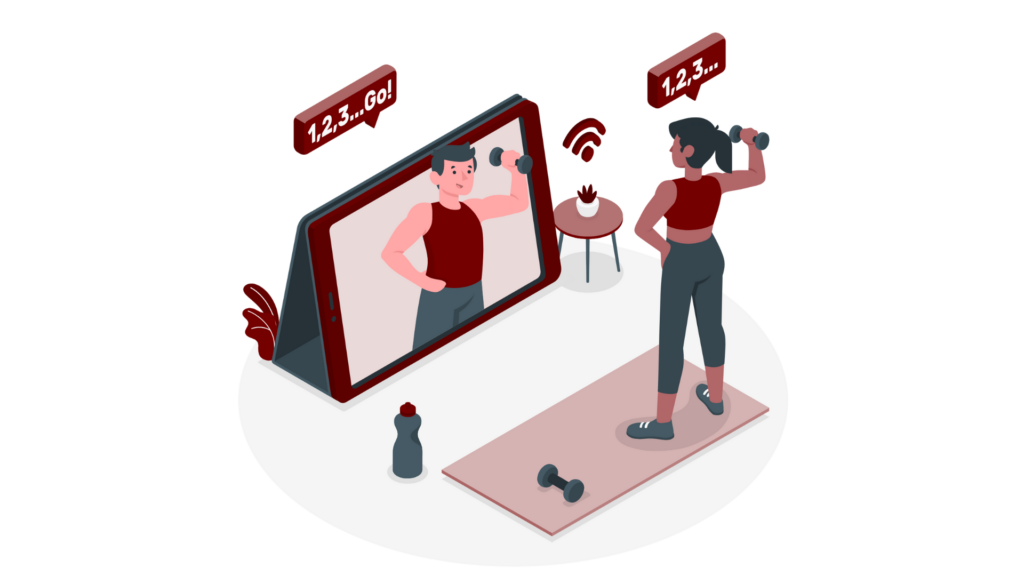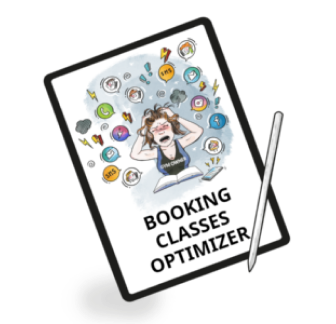Are you a fitness professional who runs an own gym or wants to start one? Are you thinking about an online version of your services, but you don’t know where to begin?
In this article, we will guide you step by step through the process of establishing your successful online fitness business and provide many details worth considering.
Read also about starting a fitness business not only an online one.

Key Takeaways
- Don’t start your online fitness business without a detailed plan.
- To start your online fitness business successfully you need to understand the industry, know your target audience, identify your niche, buy or collect fitness and technological equipment.
- Use gym booking software to get more online bookings and increase fitness business profit.
- To continue running your online fitness business successfully you need to build your online presence and be active in marketing and promotion.
- Assure your members’ comfort by: varied methods of payments thanks to gym billing software.
Starting an Online Fitness Business - Is It Worth?
Starting your own online fitness business can indeed be a worthwhile endeavor, provided you understand the market dynamics, potential challenges, and strategies for success.
Regional Insights: North America led the online fitness market with a revenue share of 40.3% in 2022. The high adoption rate of smartphones and robust internet connectivity are major factors driving this growth (Grand View Research).
- Growing Demand: The online fitness industry is rapidly expanding, with projections indicating substantial growth. For example, the market is expected to grow from $14.9 billion in 2022 to $250.7 billion by 2032. This growth is driven by increasing health awareness and the convenience of accessing fitness services online.
- Technology Integration: The widespread adoption of smartphones and wearables has made it easier for consumers to engage with fitness apps and online training programs. Mobile fitness apps alone held 63.5% of the market share in 2023.
- COVID-19 Impact: The pandemic significantly accelerated the adoption of online fitness solutions as people sought alternatives to closed gyms and fitness centers. This shift in consumer behavior has created lasting opportunities for online fitness professionals, for example online personal trainers and teachers conducting streamings with fitness classes.

Step. 1. Plan Before you Launch
How to start an online fitness business? First of all, don’t start. Yes, we mean that! Before you start, it is super necessary to create a plan for your online training business!

Step 1 a. Choose the Best Online Client Management System
If you want to operate remotely, you’ll need a remote gym member management software.
You need to introduce a SaaS (software as service) solution, available to you from anywhere. To manage your members conveniently and effectively, we recommend one of the best solutions on the market: WodGuru.
When choosing software, check not only the customer management and a gym CRM module. The best software combines features such as online gym payment software, video sessions, recording and sharing training sessions.
Step 1 b. Define your business model
Decide which form of class suits you best. Maybe you like contact with customers in real time, even though online? Or maybe you feel better recording training sessions and being able to improve recorded scenes and edit videos?
- One-on-One Classes
- Description: Personalized sessions where a fitness trainer works directly with an individual, offering tailored guidance and adjustments based on the user’s specific goals, needs, and fitness levels.
- Key Features: Customized workout plans, real-time feedback, and direct interaction with the trainer.
- Example: Personal training sessions via Zoom or other video conferencing platforms.
- Group Live Stream Classes
- Description: Real-time fitness classes broadcasted live where multiple participants join simultaneously. These sessions often mimic traditional gym classes but are conducted online.
- Key Features: Interactive experience with a sense of community, real-time engagement, and the ability to follow along with an instructor and other participants.
- Example: Live yoga or spin classes offered on platforms like Peloton or Zoom.
- Pre-Recorded Classes
- Description: Fitness sessions that have been recorded in advance, allowing users to follow along at their own pace. These videos are typically hosted on fitness platforms or apps.
- Key Features: Flexibility to exercise at any time, variety of workouts available, and the ability to pause, rewind, or fast-forward.
- Example: Workout videos on YouTube or fitness apps like Daily Burn.
- On-Demand Classes
- Description: Similar to pre-recorded classes, on-demand classes offer a library of workout videos that users can access at any time. These classes can be streamed whenever it’s convenient for the user.
- Key Features: Instant access to a wide range of fitness videos, the ability to choose workouts that fit the user’s schedule and preferences, and often integrated with subscription services.
- Example: On-demand fitness services provided by apps like Beachbody On Demand or Les Mills On Demand.
Market Segmentation: The on-demand segment of the online fitness market was expected to generate over $107 billion in revenue by 2032. On-demand fitness allows users to access workout videos at their convenience, making it a popular choice (Global Market Insights Inc.).

Step 1 c. Decide how you will deliver services
A vital aspect of running an online fitness business is efficient service delivery. How will you train clients virtually?
You need to design an exceptional digital experience while ensuring the process is streamlined and time-efficient. Members should find it easy to access resources, make payments, join live streams, and communicate with you.
This requires both hardware and software solutions. For virtual training, you will need quality camera and sound equipment, and an appropriate setup for your training space.
Additionally, selecting the right software that suits your business needs is essential for delivering your services effectively.

Step 1 d. Decide on payment methods
Here are some common payment methods for online fitness trainers:
- Credit/Debit Cards: Secure and widely used for easy payments through online gateways.
- PayPal: A popular online payment system that offers ease of use and buyer protection.
- Bank Transfers: Direct transfers from clients’ bank accounts to the trainer’s account.
- Mobile Payment Services: Options like Apple Pay, Google Wallet, and Samsung Pay for quick transactions via smartphones.
- Subscription Services: Monthly or yearly subscriptions managed through platforms like Patreon or fitness-specific apps.
- E-Wallets: Services such as Venmo, Cash App, or Alipay, which allow for quick and simple transfers.
- Cryptocurrency: For tech-savvy clients, accepting payments in Bitcoin, Ethereum, or other cryptocurrencies.
- Fitness SaaS: Using specialized gym manager software like WodGuru that integrate scheduling and payments.

Step 1 e. Create a Business Plan
A gym business plan is a document that describes planned activities, goals, and strategies for a new or existing gym. It is an important document for anyone who wants to open or develop their own fitness business.
What to write a business plan for?
- A business plan is an action plan. You will stop dreaming and start turning your idea into a real gym business plan.
- Running a business is working in a company. Creating a plan is working “on the company,” i.e. its design and improvement.
- A gym business plan will allow you to verify your assumptions. You will observe it in a year, two, or five years. It’s super satisfying to watch how your knowledge grows every year.
- Writing this document allows you to translate your vision into a specific project and action plan. It also allows you to rethink to what extent your business idea is a recipe for success and what you still need to refine.
- Creating a business plan for a gym will help you assess the reality of your dream. You’ll check the possibilities of its implementation, as well as check the chances of its success. It’s also important to assess the risk you have to take.
- A business plan forces you to be specific. If you don’t know the answer to a question in our guide, you may be blind in this area, which is very risky.
- If you already run a gym and don’t have a plan, fix this mistake. Every gym should have some sort of ideas for the present and future actions.
If you want to know more about creating a business plan, skip to our other articles:

Step 2. Start by Running a Stationary Gym
If you already run your fitness business, but only on-site, here are two recommendations on how to skip to online business:
- Run your stationary gym and promote it online strongly. It will build the awareness of your brand and will make it easier to start an online fitness business.
- Diversify your offer – add video workouts, facebook and instagram events, live sessions, etc. It will build your online presence.
If you don’t run a gym and want to start your online fitness business from scratch, skip Step 3.
Step 3. Understand the Industry

Step 3 a. Know the New Trends in Online Fitness
Staying informed about the latest trends in online fitness is crucial for success in this rapidly evolving industry. One major trend is the significant growth in on-demand fitness services, allowing users to access workout videos anytime and from anywhere.
- Personalization through AI and data analytics is another key development, offering tailored workout plans based on individual user data and preferences.
- The integration of wearable technology, such as fitness trackers and smartwatches, enhances the overall fitness experience by providing real-time feedback and tracking.
Step 3 b. Know the Popular Online Fitness Possibilities
- Subscription Models: Implement subscription models to provide ongoing access to fitness content and services. This approach is successfully used by Peloton, Apple Fitness+, and Beachbody On Demand, offering monthly or yearly subscriptions for continuous access to their platforms.
- Live Streaming Classes: Offer live classes to simulate the gym environment and build a sense of community. Popular examples include Peloton and Apple Fitness+, which provide live sessions where users can interact with instructors and peers.
- On-Demand Workouts: Provide a library of pre-recorded classes that users can access anytime, fitting their schedules. Beachbody On Demand and Les Mills On Demand are prime examples, offering extensive catalogs of workouts across various fitness disciplines.

Step 3 c. Turn Online Fitness Business Limitations into Strength
Ok, so you want to be an online fitness coach. Remember though that not every fitness industry is suitable for conducting online classes. Safety factors, protection, access to equipment, etc. come into play here.
But if you are a representative of this industry, don’t worry. Below are some examples of turning this problem into a new offering:
| Branch | What Doesn’t Work Online | What Can Work Online | |
| Weight Lifting |  | protection and assistance through physical presence | write out training plans for strengthening and nutrition plans with an adequate supply of protein |
| Acrobatics, Pole Dance, Tissue Acrobatics, Aerial Hoop |  | trainer’s help and protection, especially with inverted figures and jumps | stretching, strengthening exercises, choreography, tutorials about grace and music matching |
| Wall climbing |  | belaying | stretching, strengthening exercises |
| Martial Arts with weapons |  | access to weapons, sparring, training in reacting to the opponent’s actions, difficult or dangerous movements where an in person training is needed | techniques, movement patterns, theoretical knowledge, basic movements and principles, strengthening exercises |
| Contact sports |  | sparring, training in reacting to the opponent’s actions, difficult or dangerous movements where an in person training is needed | techniques, movement patterns, theoretical knowledge, basic movements and principles, strengthening exercises |
| Gym |  | access to big and expensive fitness equipment, machinery | matching exercises to the equipment available at home, advice on what can be used as training equipment at home, e.g. even water bottles. |
Step 4. Get to Know Your Target Audience
The most important thing in promoting your gym is that you know your target audience, direct your message to them and make it memorable for them for a long time.
User Demographics: Millennials are the primary users of fitness apps, with 81% of Millennials engaging in exercise or expressing a desire to do so, compared to 61% of Boomers. Additionally, 46% of Millennials seek quantifiable data about their health (Wellness Creative Co).

Step 5. Identify Your Niche
Identify your niche in the online fitness market for differentiating your services and targeting the right audience.
Start by assessing your strengths, expertise, and interests to determine the specific type of fitness training you can excel in, such as yoga, HIIT, strength training, or wellness coaching.
Conduct market research to understand current trends and demands, as well as the competition in various niches.
By specializing in a niche, you can tailor your content and marketing strategies to meet the unique needs of your chosen audience, thereby creating a loyal customer base and standing out in a crowded market
Step 6. Buy equipment or collect it at the recording location
When starting an online fitness business, decide whether to buy equipment or collect it at the recording location.
Buying equipment ensures consistent quality, control, and availability, allowing for a permanent setup tailored to your needs. This investment can enhance professionalism and provide a reliable production environment. However, it involves higher upfront costs, storage requirements, and maintenance responsibilities.
Conversely, collecting equipment at the recording location offers flexibility and lower initial investment, ideal for those who prefer to rent high-quality gear or lack a permanent recording space. This approach allows for upgrades and changes but may lead to potential inconsistencies and logistical challenges in transporting and setting up equipment each time.
Your choice should align with your business model, long-term plans, and available resources.

Step 7. Build Your Online Presence
If potential clients don’t know you exist, how can they purchase a training program from you? Assuming that you want to enter the online zone, you should also advertise and show yourself there. Your customers spend their time there.
Step 7 a. Create a Website
One of the best gym promotion ideas is to have a representative website. It is both an aesthetic showcase of your fitness center and a place with contact details and broad offer information.
Don’t know how to start creating a fitness business web page? Use a website builder like WodGuru or Wix to create a stunning website. Here are some examples of WodGuru creations for gym owners:
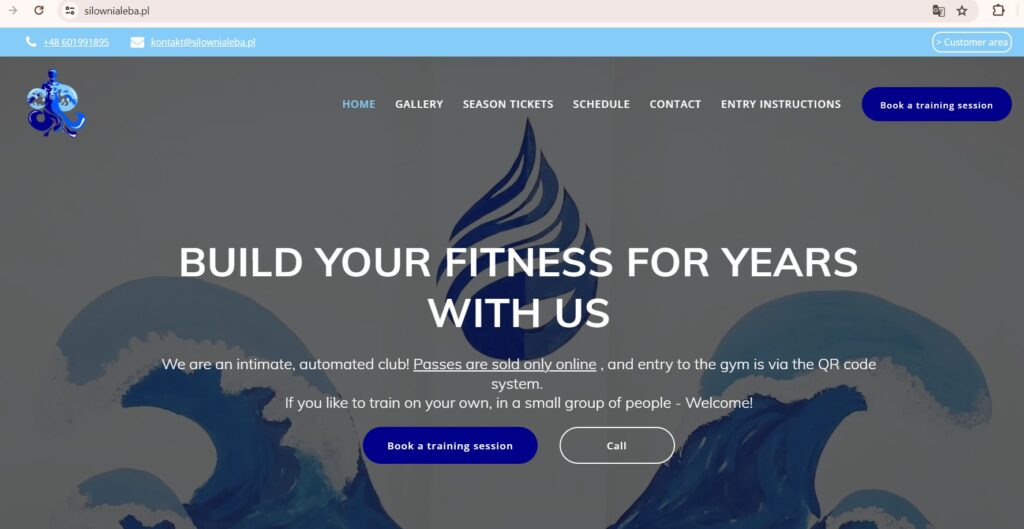
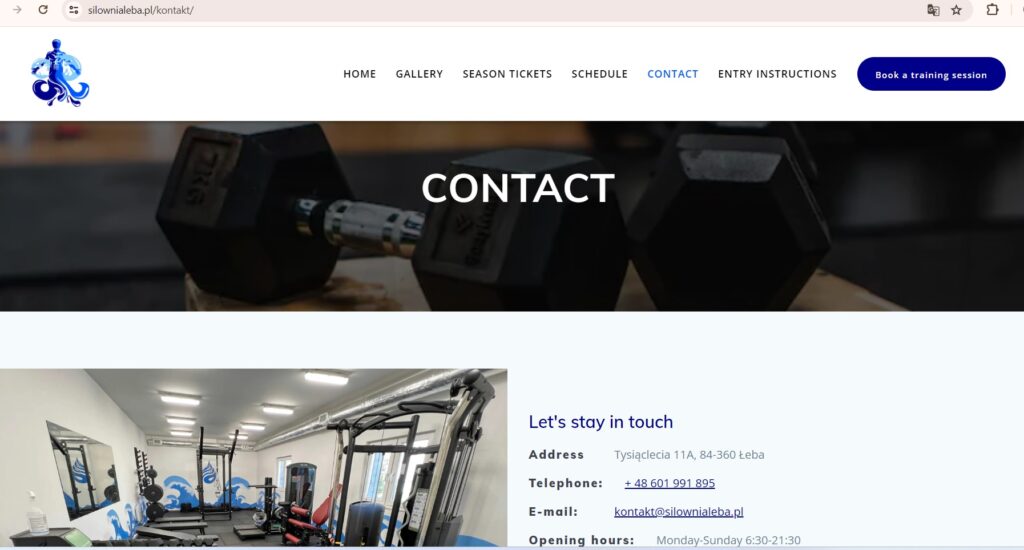

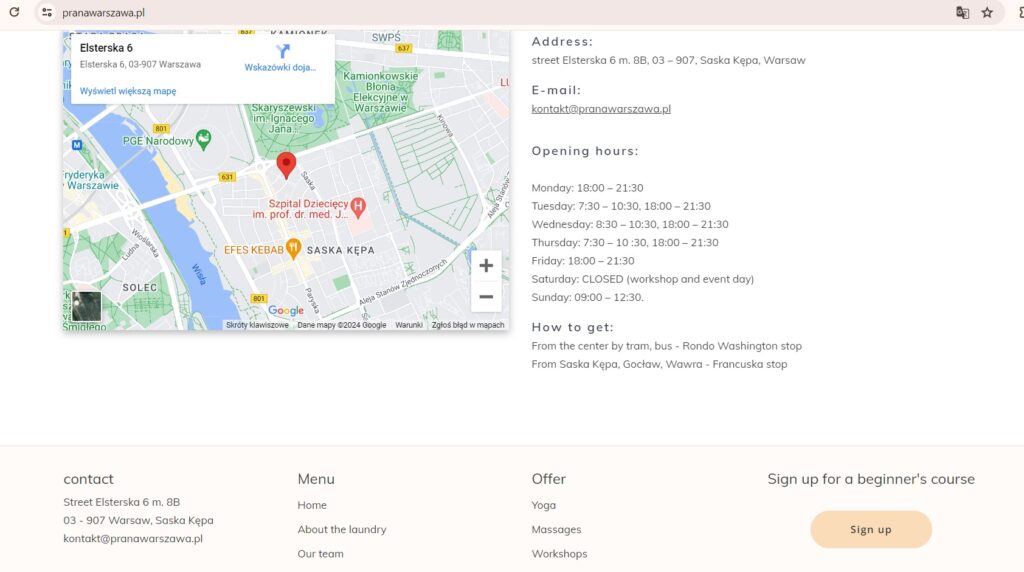
What’s more, when you already have your www, you don’t need to leave a place for your gym software management provider. It will perform behind the brand of your gym or fitness club. This is what we call website gym integration.
Step 7 b. Create a Fitness App
How can a fitness app contribute to online fitness business promotion? It will contain your logo and constantly remind the members about it. This is the most effective way of creating brand awareness, which we mentioned earlier.
Fitness App Usage: Fitness apps generated $3.58 billion in revenue in 2023, marking a 9.1% increase from the previous year. There were 368 million users of fitness apps in 2023, and these apps were downloaded over 850 million times (Business of Apps).
Popularity of Fitness Apps
Mobile fitness apps held 63.5% of the market share in 2023. The widespread use of smartphones has made fitness apps accessible to a broad audience, contributing to their popularity and usage (Global Market Insights Inc.).

Read also about apps for personal trainers and How to Create a Fitness App.
Step 7 c. Be Active on Social Media
Be active on all social media channels you decide to run.
- Here is a list of 200+ funny and motivational Gym Quotes – inspire your followers to spread motivating or thought-provoking fitness quotes in their social media and real life.
- Let your viewers copy 1000+ Gym captions – post some cool post descriptions once in a while. Your current and potential members will be waiting for the next post in this series to take the sentence to their social media profiles.
Step 7 d. Run a fitness blog
Write blog articles that are valuable and people will actually read them with interest. Encourage the people to become your paying clients! Appreciating you as the author of substantive and useful entries, they will become interested in your gym.
Get inspired by 20 Best Fitness Blogs in 2024.
Step 7 e. Invest in Online Advertising
Investing in online advertising is a strategic move for gym promotions, as it allows gyms to effectively reach their target audience.
By creating engaging ads that highlight unique gym membership promotion ideas and upcoming fitness challenges, gyms can attract potential members and retain existing ones.

Source: FlowPlayer website
Online advertising platforms offer advanced targeting options, ensuring that promotions are seen by individuals most likely to be interested in fitness and wellness.
This focused approach maximizes the impact of gym promotions, driving membership growth and increasing participation in fitness challenges.
Step 8. Plan Your Pricing
- Market Research:
- Study competitors’ pricing.
- Understand your target audience’s spending habits and preferences.
- Cost Analysis:
- Calculate fixed costs (software, marketing, equipment).
- Determine variable costs (transaction fees, streaming services).
- Value Proposition:
- Highlight your unique selling points (USPs).
- Ensure prices reflect the value provided.
- Pricing Models:
- Subscription Plans: Monthly, quarterly, or annual.
- Pay-Per-Use: Charge per individual class/session.
- Freemium Model: Basic services free, premium features paid.
- Tiered Pricing: Multiple service levels (e.g., basic, standard, premium).
- Discounts and Promotions:
- Introductory offers (first month discount, free trials).
- Bundles (multiple services at a discounted rate).
- Seasonal promotions.
- Feedback and Adjustment:
- Collect customer feedback.
- Adjust prices based on feedback and market trends.
- Psychological Pricing:
- Use charm pricing (e.g., $29.99 instead of $30).
- Present higher-priced options to make mid-tier options look more appealing.
Example Pricing Structure
Basic Plan: $15/month – Access to on-demand workouts. Standard Plan: $30/month – Includes live stream classes and personalized plans.
Premium Plan: $50/month – Adds one-on-one virtual training and nutrition coaching.
Step 9. Plan Marketing and Promotion
Thousands of books and articles have been written about marketing and promotion. If you want to delve deeper into the topic, read a lot, come up with your campaigns and, above all, match the message to your product and your target group.
Skip ahead to an article about Planet Fitness Business Model.
Step 10. Overcome Challenges
Think about the solutions to challenges you will have to face – before they happen! Some of the problems we listed below.
- Technical Issues: Any online business can face technical challenges like server downtime and connectivity issues, which can disrupt user experience.
- Retention and Engagement: Keeping users engaged and motivated over time can be challenging. Many users may start with enthusiasm but gradually lose interest, leading to churn.
- Content Quality: Ensuring that workout programs are effective and engaging is the most important. Poorly designed content can lead to user dissatisfaction and reduced retention.
FAQ
Begin by identifying your niche, creating a business plan, investing in quality equipment, choosing the right software platform, developing engaging content, and marketing your services effectively.
Yes, online fitness businesses can be profitable due to low overhead costs and the growing demand for flexible, accessible fitness solutions.
Differentiate yourself by offering personalized experiences, leveraging the latest technology, maintaining high-quality content, and consistently engaging with your community.

